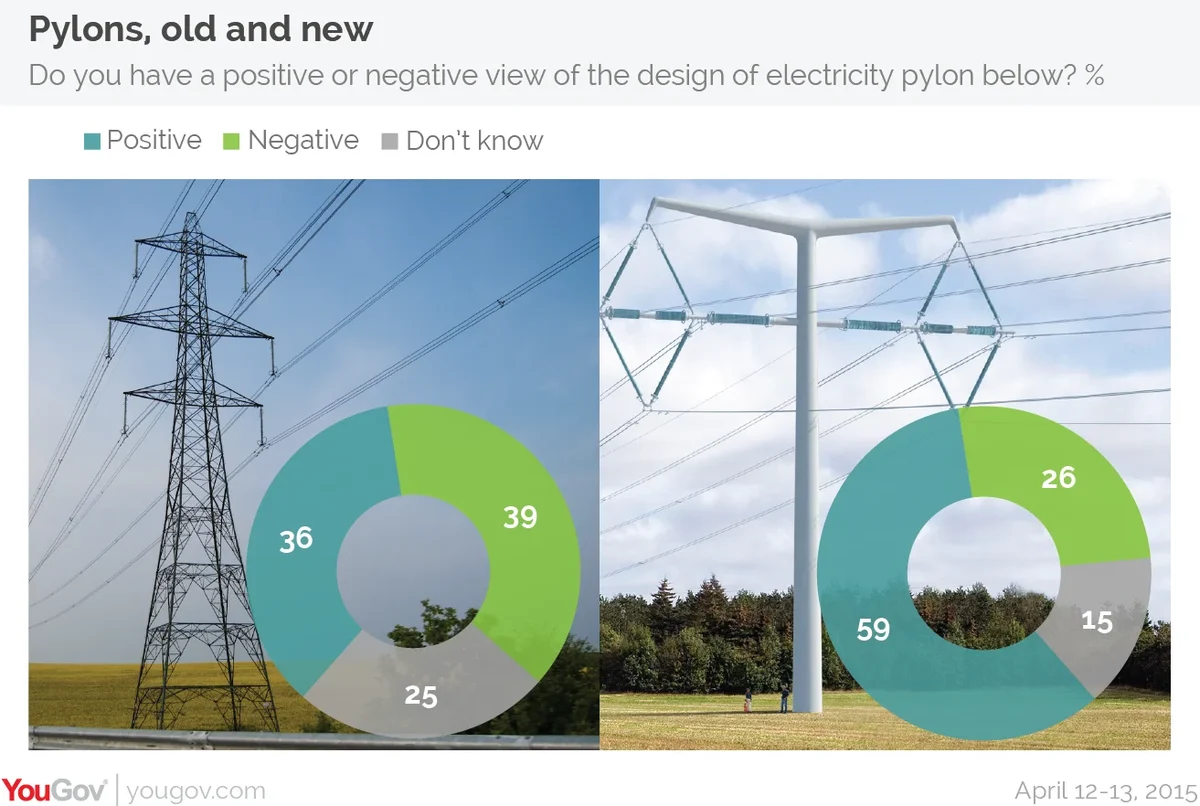The new electrity pylon design is almost twice as favoured as the old design – and is especially liked by the young
Since 1928 Britain's landscape has been crossed by a single, steel 'lattice' design of pylon. But after winning a competition in 2011, the first new T-Pylon has been constructed for test and training purposes, and will begin replacing the 88,000 lattice pylons in the years to come. Weighing ten tons less than the traditional pylon and standing 14 meters shorter, the new design will be less obtrusive and better suited to transmitting a diversified electricity supply than its predecessor.
The lattice pylon has a keen following from a small number of enthusiasts, who even have their own society, however new YouGov research finds the British public far more favourable of its replacement.
39% have a negative view of the traditional design compared to 36% who view it favourably. The new design, by contrast, is viewed positively by a majority (59%) and seen negatively by only 26%.

The T-Pylon is especially favoured by the youngest generation (70%), and men (63%) are also slightly more fond of it than women (56%).
Pylons have a modest but staple place in British culture, and many still remember the 1991 National Power advert in which pylons uproot themselves and walk through the British countryside towards a new, cleaner power station. The National Grid say it would be ten times as expensive to lay power cables underground.









